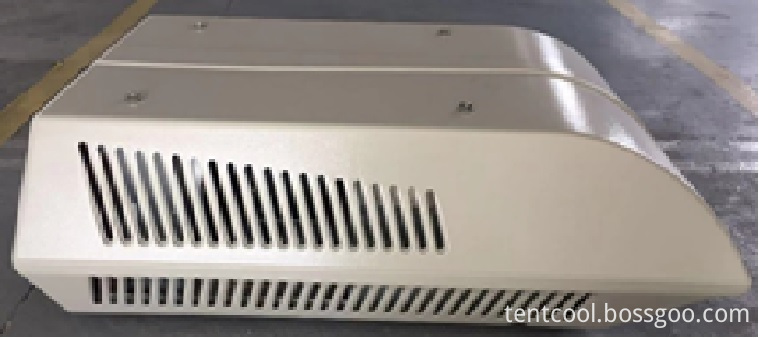Recently, the Chinese aluminum industry in Zhengzhou, non-ferrous metals and Development Research Institute of Φ6000 156m3 large gearless type flotation tank has completed the design and processing, and on-site installation in Zhongzhou Aluminum mill floating area, basically have the industry test requirements. Bauxite flotation desiliconization is currently the most widely used bauxite ore dressing method, and there are many kinds of flotation machines. According to mechanical stirring, it can be divided into mechanical agitation and non-mechanical agitation. The agitating flotation machine is also called an inflating flotation machine, that is, a non-driven flotation machine (tank). 1 structure of transmissionless flotation machine The non-driven flotation machine has a simple structure and no mechanical stirring device. It is mainly composed of a feed pipe, a slurry distributor, a microbubble generator, a flotation tank, a foam tank, a wake tank and a needle groove. In industrial production, it is usually Multiple flotation cells are connected in series. The bubble mineralization tube is an important part of the inflatable microbubble flotation machine. Each flotation tank is equipped with 12-17 mineralized tubes to facilitate uniform mineralization of the bubbles. The microbubble mineralizer is made of a special porous material with a plurality of slurry channels. The compressed air passes through the wall of the slurry channel to form tiny bubbles that are in contact with the slurry and are quickly carried away by the high-speed slurry. The flotation tank and the wake tube form a "U" type passage, and the height of the slurry surface in the flotation tank is adjusted by the height of the wake in the wake box. The bottom stream slurry of the flotation tank is returned to the slurry distributor through the circulation pipe for flotation, and the useful mineral is recovered as much as possible, and the steady flow plate is provided at the bottom flow port to reduce the fluctuation of the liquid level of the flotation tank. 1-inlet pipe; 2-slurry distributor; 3-bubble mineralized pipe; 4-microbubble mineralizer; 5-pressure pipe; 6-mineralized pipe; 7- wear-resistant nozzle; 8-flotation Groove; 9-foam tank; 10-series chute; 11-foam discharge port; 12-foam guide trough; 13-stabilizer plate; 14-cycle pipe; 15-tail flow box; 16-tail flow enthalpy; Needle groove; 18-tail tube; Figure 1 Single-slot structure diagram of the non-driven flotation machine 2 working principle of transmissionless flotation machine The working principle of the non-driven flotation tank is as follows: the slurry is fed into the slurry distributor through the feeding pipe by the feeding pump at a pressure of 0.05-0.50 MPa, and is evenly distributed into each bubble mineralizing tube. When the slurry passes through the microbubble mineralizer, it contacts the tiny bubbles generated by the compressed air through the wall of the mineralization tube to achieve the first mineralization. The high-flow slurry will take the microbubbles away quickly, and will be compressed again when the pipes are mineralized. Some of the bubbles are dissolved in the slurry, and are quickly released at the bottom of the mineralized pipes for a second mineralization. When the slurry reaches the bottom end of the mineralization tube and is sprayed into the flotation tank by the wear-resistant nozzle, the sudden release of the pressure causes the tiny bubbles in the slurry to be rapidly precipitated, and the microbubble is in contact with the sinking slurry during the floating process to realize the third mine. Turn. The flotation foam overflows into the foam tank, and some of the microbubbles and intermediate density particles enter the underflow circulation tube and are pumped back into the flotation tank for re-sorting. The flotation wake enters the needle-shaped tank through the wake tank, and the slurry in the needle-shaped tank is pumped into the sweeping tank or the tailings settling tank. The non-transmission flotation machine (slot) has a simple structure, convenient operation, small floor space, low energy consumption, stable operation, good desiliconization effect on low-grade bauxite, and high recovery rate of ore dressing. However, in the actual production process, there are problems such as easy clogging of the bubble mineralizer, frequent maintenance and poor adjustability. The non-driven flotation machine (tank) is mainly used for beneficiation and purification of bauxite, and its application in the non-metallic ore flotation process has not been reported.
Rooftop Shelter Air Conditioners are widely applied to crane
equipment, vehicles, and small vessels etc. The units have cooling, heating,
ventilation and dehumidification functions, with anti-shake, anti-vibration and
high reliability characteristics. All-in-one design improves the
stronger applicability and generality.
Features:
1. Instant cooling/Temperature adjustable
2. Precise temperature control
3. Modern design and high compatibility
4. Memory function and delay start
5. Low noise
6. Delay start function
Technical Data:
Model No.
TRS-020HCWa
TRS-032HCWa
TRS-035HCWa
Cooling capacity
kW/BTU
2.0KW/7000BTU
3.2KW/11000BTU
3.5KW/12000BTU
Electric source
PH-V-Hz
220V 50Hz / 60Hz
220V 50Hz / 60Hz
220V 50Hz / 60Hz
Rated Cooling Power Input
W
1050
1380
1220
Rated Cooling Current Input
A
4.8
6.3
6.1
Working Condition
℃
`-30~45
`-30~45
`-30~45
Temperature Control Range
℃
15~35
15~35
15~35
Refrigerant
R22/R410a
R22/R410a
R22/R410a
Noise
dB(A)
≤50
≤50
≤50
Dimension(LxWxH)
mm
980*640*230
1060*720*365
1060*720*365
Rooftop Shelter Air Conditioner Rooftop Shelter Air Conditioner, Recreational Vehicle air conditioner, Touring Vehicle air conditioner, Motor homes air conditioner Taizhou Tentcool Electrical Appliance Co., Ltd. , https://www.tentcool.com




